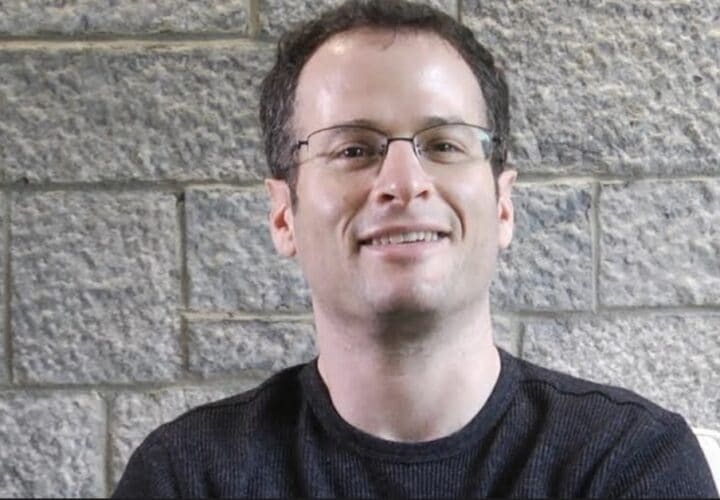New research sheds light on the inspiring displays of strength and optimism that can follow a Parkinson’s diagnosis. In a Q&A, Neurologist Bastiaan Bloem shares insight.
“As strange as it may sound,” Bloem says, “having this chronic disease also opens up new avenues for creating meaning to your life.”
Like any degenerative brain disease, there is currently no cure for Parkinson’s, and the progressive disease has major impacts on patients and families. But, a recent paper offers evidence that in the face of tremendous adversity, some people who live with Parkinson’s are able to find positives in their lives, from a renewed sense of purpose, to new relationships, to a more vigorous interest in life.
The authors of the paper, titled “The Silver Linings of Parkinson’s Disease,” hope their preliminary results not only inspire people with Parkinson’s, but serve as a springboard to future research into reasons for hope.
Paper co-author Bastiaan Bloem, a neurologist and the director of the Center of Expertise for Parkinson and Movement Disorders at Radboud University in the Netherlands, spoke with Being Patient about the inspiration behind the survey, what it means to see beyond the wreckage, and his hope for how medical professionals can help people who live with Parkinson’s see the potential “silver linings” after a diagnosis.
Being Patient: Tell us about the inspiration behind the survey.
Bastiaan Bloem: We’re doing a lot of research studies at my center. I’m the director of a very large university medical center. It’s called the Center of Expertise for Parkinson’s in the Radboud University Medical Center, and we strongly believe in patient participation.
As a “reward,” for people who participate in our trials, every participant gets to ask me any question, which I will subsequently answer in a brief video. I get all sorts of questions about treatment or prognosis. But one of my patients in a trial said, ‘Is there upsides to having Parkinson’s disease? Is there also a positive element?’
My initial reaction was oh my boy, no of course there isn’t.
Then I thought further, and I said, “I’m not the person to answer this question. Your fellow patients should answer that question.” I decided to post a film on social media — Twitter, Instagram, LinkedIn, Facebook — where in the most careful way, I said, “One of your fellow patients asked me this provocative question. Of course, you never asked for Parkinson’s. You would wish you were cured tomorrow. But, given that Parkinson’s is a relentlessly progressive, [incurable] disease, is there such a thing as a ‘silver lining,’ quote unquote, a thin silver line around what is otherwise a pitch-dark cloud?”
We received an incredible amount of responses, which fell into three categories. There were one or two patients who said, “How on earth do you dare to ask this question? Are you out of your mind?” I approached these two individuals personally, and I said, “Look at the video again. See how carefully I explained this,” and I emphasized again that understanding the possible presence of silver linings would ultimately make me and others better physicians, or mental health professionals.
About one third [in the survey] said, “To the best of my abilities, there’s no such thing as a positive side to Parkinson’s. We can’t see any silver linings.” About two thirds said, “Yes, we never asked for this disease. And yes indeed, we want a cure. But now that the disease is here, I’ve become more physically active, lead a healthier lifestyle. I started exercising. I became an ambassador for Parkinson’s. My relationships improved. I quit working, or I diminished my workload, and I travel more.”
I felt that was incredibly encouraging, because it tells you a lot about the resilience of people about how to deal with this ordeal. It’s a source of inspiration for fellow patients to also start to look at these potential positive sides.
It helps me as a physician, and I hope it’s an inspiration for fellow physicians, better support people addressing silver linings in the consultation room and pointing it to next patients. I thought it was really new and refreshing to see these perspectives.
Being Patient: What are some concrete steps that clinicians can take to help patients identify some of these potential silver linings?
Bastiaan Bloem: Clearly, during your first consultation, that’s not the right moment to point to silver linings. But as you build up a relationship with a patient with follow-ups, this issue of silver linings can definitely be part of your repertoire of what you have to offer to patients and families: to bring up the issue of exercise as a positive element, to bring up the issue of becoming an ambassador, to tell people that, strange as it may sound, having this chronic disease also opens up new avenues for creating meaning to your life. I already experience, and so do my colleagues, that this is actually working out in practice, that people do appreciate hearing about these upsides.
We only tend to look at what people can no longer do … That’s the change in healthcare that we need to embrace: look at what people can do instead of what they cannot do, and silver linings is definitely part of that approach. It offers perspectives for patients to make the most of this new situation and it gives them some hope. It gives them action points, instead of [them] passively waiting for what happens next. They can pick this up and take charge and take control again.
Being Patient: Do you have any future research plans with studying the silver linings of Parkinson’s?
Bastiaan Bloem: Definitely. What we’re doing in this paper is scratching the surface. We’re raising awareness for this issue, and I think was convincingly shown that there is such a thing as a silver lining.
The question is: This was not an epidemiological survey; this is a biased set of responses of people active on social media; what about underserved communities, people of lower socioeconomic status, people of non-western origin, people living in poverty? How common is this? What are the determinants? Can you train resilience? Can you instill silver linings in people by discussing it?
One particular element that we emphasized in our paper is it would be nice to have a scale to measure silver linings. There was a silver linings questionnaire which we’ve adapted for Parkinson patients, but that of course needs to be validated. So, can you use that as a screening instrument in daily life to see if people have identified silver linings, and can you then take that as a next step to present different examples of silver linings to patients as a source of inspiration to identify what suits their personal abilities and interests? There’s a whole range of research that can and needs to be done now …
Silver linings is the penultimate example of personalized medicine. We talk about personalized precision medicine all the time. People tend to equate that with linking your DNA to one particular drug. The answers to the survey showed that silver linings [are] personalized. Some people had it. Others were offended, a small group. Among those with silver linings, they were very different across different individuals. It’s a prime example of personalized medicine, which physicians should incorporate in their overall armamentarium of what we offer to people with Parkinson’s.
The implications go well beyond Parkinson’s, because I think there must be silver linings [in Alzheimer’s], rheumatoid arthritis or diabetes. There must be all sorts of diseases where silver linings are likely applicable.
Being Patient: The patient who first asked you whether there are silver linings in Parkinson’s is actually an author of this paper, and there are others living with the disease who authored it too?
Bastiaan Bloem: I’m increasingly writing papers not for but with patients. Jos Voeten is the guy who raised the initial question. He’s an author on the paper, and there are three other very influential patient ambassadors. I wanted to make sure that the message got across and that we wrote it up in a sufficiently sensitive way, because … I do feel this is a sensitive issue, by engaging the patients as authors, we wrote it up in a very respectful and sensitive way. It was consequently exceptionally well-received by the community.
The interview has been edited for length and clarity.



